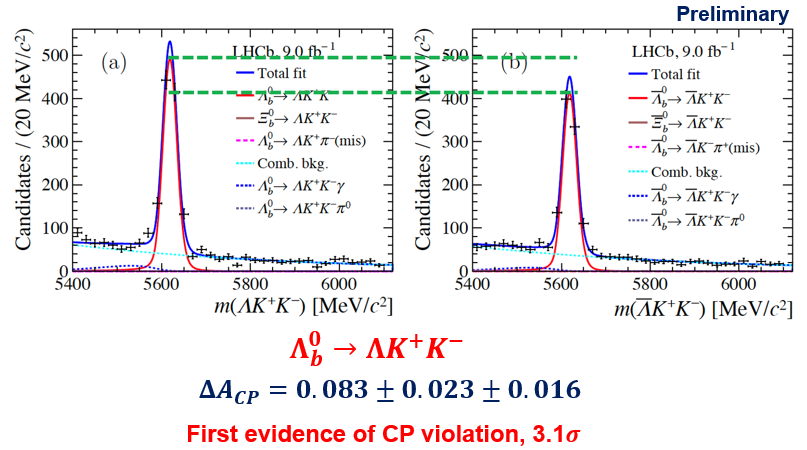This week, at a CERN seminar, the LHCb collaboration presented new results that provide evidence for CP violation in Λb0→ΛK+K– decays.
LHCb is an experiment designed to study physics phenomena including “CP violation”, which is closely linked to the disappearance of antimatter soon after the Big Bang leaving only matter to survive and build the universe we live in today. To do this, LHCb physicists measure differences between the properties of matter and antimatter particles, due to the presence of CP violation. CP violation was discovered experimentally in 1964 in the decay of neutral K mesons. In 1973, M. Kobayashi and T. Maskawa proposed a mechanism that could incorporate CP violation into the theory that years later became known as the Standard Model of Particle Physics (SM), predicting the existence of at least three families of particles; they were awarded the 2008 Nobel Prize in Physics for this idea. All measurements of CP violation to date are consistent with SM predictions. However, the SM cannot explain the large matter-antimatter asymmetry in the universe. LHCb is therefore looking for other, as yet undiscovered, manifestations of CP violation. CP violation has been observed already in neutral kaon decays, in D0 meson decays, in B0, B+ and Bs0 meson decays. However, 60 years after the discovery of CP violation, it had not yet been observed in baryon decays as shown in the history plot below. The evidence, reported here, is an important step towards the discovery of CP violation in baryon decays.

CP violation can manifest itself as the difference between the number of Λb0→ΛK+K– decays and the number of Λb0→ ΛK+K– decays, where Λb0 consists of three matter valence quarks (udb) and Λb0 of three antimatter valence quarks (udb). The figure below shows such a difference as observed in the LHCb data.

Read more in the LHCb seminar presentation and in the forthcoming paper.
